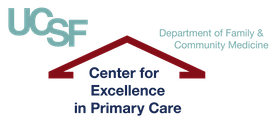The CEPC recognizes that an essential ingredient of transforming and sustaining change in the primary care delivery system is driving policy change at the organizational, community, local, regional, and national levels. As we provide practice transformation assistance, conduct research and evaluation in primary care, and identify best practices in primary care delivery, we are committed to using our experience and data to drive macro-level changes and contribute to long-term health policy and public health solutions. We also recognize the importance of a framework for health in all policies, and the central importance of health policy to other social determinants of health, such as public policy, education, housing, transportation, food policy, etc. CEPC shall also serve as a resource, convener, and informant for pressing and emerging health policy issues, through the work that we conduct directly, by showcasing and supporting relevant policy issues, or highlighting exemplars across the nation and world with potential impact on health care in the United States.
Family Medicine for America's Health. Family Medicine for America’s Health is a new collaboration between the eight leading family medicine organizations in the United States to drive continued improvement of the U.S. healthcare system and demonstrate the value of true primary care. This initiative seeks to transform the family medicine specialty to ensure it meets the nation’s healthcare needs and ultimately, improve the health of every American. Specifically, this means: furthering the evolution of the patient-centered medical home, advancing the use of technology, ensuring a strong primary care workforce, and shifting to comprehensive primary care payment. Family Medicine’s strategic plan centers on seven core strategies to achieve these objectives: 1) show the value and benefits of primary care, 2) ensure every person will have a personal relationship with a trusted family physician or other primary care professional, in the context of a medical home, 3) increase the value of primary care, 4) reduce health care disparities, 5) lead the continued evolution of the Patient-Centered Medical Home, 6) ensure a well-trained primary care workforce, and 7) improve payment for primary care by moving away from fee for service and towards comprehensive primary care payment. A volunteer workforce in six major areas has been organized to carry out actions in pursuit of these strategies. The six areas are: Practice, Payment, Workforce Education and Development, Technology, Research, and Engagement. CEPC co-founder Dr. Kevin Grumbach is a member of the Engagement team.
The Patient-Centered Medical Home's Impact on Cost and Quality: Annual Review of Evidence (2013-2014). This year’s Patient-Centered Primary Care Collaborative (PCPCC) Annual Review of the Evidence summarizes new results from primary care patient-centered medical home (PCMH) initiatives published from September 2013 through November 2014 (since the publication of the previous Annual Review). Selected cost and utilization outcomes from a combination of peer-reviewed studies, state program evaluations, and industry publications are aggregated to present an overview of PCMH and primary care innovations happening across the country. The evidence for the PCMH described here underscores the impressive and growing trends that tie the medical home model of care with reductions in health care costs and unnecessary utilization of services; improvements in population health and preventive services; increased access to primary care; and growing satisfaction among patients and clinicians.
The Medical Home’s Impact on Cost and Quality: An Annual Update of the Evidence (2012-2013): CEPC faculty contributed to this annual report highlights recently published clinical, quality, and financial outcomes of patient-centered medical home (PCMH) initiatives from across the United States. Profiling a showcase of PCMH initiatives, this report focuses on studies released between August 2012 and December 2013 and identifies where they are happening, who is leading them, and highlights the outcomes they are achieving. In addition to the results from these 21 most recent studies, the report includes a summary of PCMH initiatives taking place throughout the US since 2009, which can be found in Appendix A, reflecting 54 different studies organized by state and location. Although the evidence is early from an academic perspective, and this report does not represent a formal peer-reviewed meta-analysis of the literature, the expanding body of research provided here suggests that when fully transformed primary care practices have embraced the PCMH model of care, we find a number of consistent, positive outcomes. Supported by the Milbank Memorial Fund.
